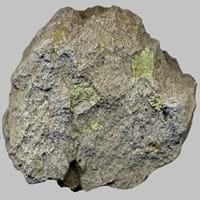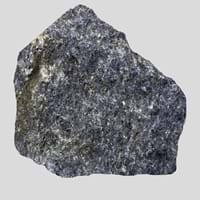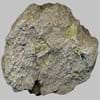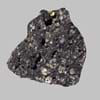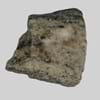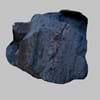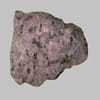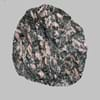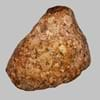Definition
Minette is a variety of Lamprophyre and is porphyritic alkaline igneous rock which is mainly dominated by biotite and potassic feldspar
Blueschist is a metamorphic rock which is generally blue in color and is formed under conditions of high pressure and low temperature
Discoverer
Unknown
Edgar Bailey
Etymology
From French mine ore, mine + ette
From French schiste, Greek skhistos i.e. split
Class
Igneous Rocks
Metamorphic Rocks
Sub-Class
Durable Rock, Medium Hardness Rock
Durable Rock, Medium Hardness Rock
Group
Plutonic
Not Applicable
Other Categories
Coarse Grained Rock, Fine Grained Rock, Opaque Rock
Fine Grained Rock, Medium Grained Rock, Opaque Rock
Texture
Porphyritic
Foliated
Color
Black, Bluish - Grey, Brown, Dark Greenish - Grey, Green, Grey
Blue, Bluish - Grey, Purple, Shades of Blue
Durability
Durable
Durable
Appearance
Dull, Banded and Foilated
Dull and Banded
Interior Uses
Countertops, Decorative Aggregates, Interior Decoration
Floor Tiles, Flooring, Homes, Hotels, Kitchens
Exterior Uses
As Building Stone, As Facing Stone, Garden Decoration
Garden Decoration, Office Buildings
Other Architectural Uses
Curbing
Not Yet Used
Construction Industry
As Dimension Stone, Cement Manufacture, for Road Aggregate, Making natural cement, Manufacture of Magnesium and Dolomite Refractories
As Dimension Stone, Cobblestones, Rail Track Ballast, Roadstone
Medical Industry
Taken as a Supplement for Calcium or Magnesium
Not Yet Used
Antiquity Uses
Artifacts, Monuments, Sculpture, Small Figurines
Artifacts, Monuments, Sculpture
Commercial Uses
An Oil and Gas Reservoir, As a Feed Additive for Livestock, Gemstone, Metallurgical Flux, Production of Lime, Soil Conditioner, Source of Magnesia (MgO)
Cemetery Markers, Commemorative Tablets, Creating Artwork, Curling, Tombstones
Types
Minette, Alnoite, Camptonite, Monchiquite, Fourchite, Vogesite, Appinite and Spessartite
Not Available
Features
Always found as volcanic pipes over deep continental crust, Host rock for Diamond, Is one of the oldest rock, Surfaces are often shiny
Has High structural resistance against erosion and climate, Very fine grained rock
Archaeological Significance
Famous Monuments
Data Not Available
Data Not Available
Famous Sculptures
Data Not Available
Data Not Available
Formation
Minette formation takes place deep beneath the Earth’s surface at around 150 to 450 kms, and are erupted rapidly and violently.
Blueschist forms due to the metamorphism of basalt and other rocks with similar composition at high pressures and low temperatures and approximately corresponding to a depth of 15 to 30 kilometers and 200 to 500 °C.
Mineral Content
Amphibole, Carbonate, Garnet, Micas, Olivine, Phlogopite, Pyroxene
Albite, Chlorite, Epidote, Garnet, Glaucophane, Lawsonite, Muscovite or Illite, Quartz
Compound Content
Aluminium Oxide, NaCl, CaO, Iron(III) Oxide, FeO, Potassium Oxide, MgO, MnO, Sodium Oxide, Silicon Dioxide, Titanium Dioxide
Aluminium Oxide, CaO, Iron(III) Oxide, FeO, Potassium Oxide, MgO, MnO, Sodium Oxide, Phosphorus Pentoxide, Silicon Dioxide, Titanium Dioxide
Types of Metamorphism
Burial Metamorphism, Cataclastic Metamorphism, Contact Metamorphism, Hydrothermal Metamorphism, Impact Metamorphism, Regional Metamorphism
Not Applicable
Types of Weathering
Biological Weathering, Chemical Weathering
Mechanical Weathering
Types of Erosion
Chemical Erosion, Coastal Erosion, Sea Erosion, Wind Erosion
Chemical Erosion, Coastal Erosion, Water Erosion, Wind Erosion
Grain Size
Fine to Coarse Grained
Fine to Medium Grained
Fracture
Conchoidal
Conchoidal
Streak
White
White to Grey
Porosity
Very Less Porous
Highly Porous
Luster
Subvitreous to Dull
Dull
Cleavage
Conchoidal
Slaty
Toughness
Not Available
1.5
Specific Gravity
2.86-2.87
3-3.2
Transparency
Translucent to Opaque
Opaque
Density
2.95-2.96 g/cm3
2.8-2.9 g/cm3
Resistance
Heat Resistant, Impact Resistant
Impact Resistant, Pressure Resistant
Deposits in Eastern Continents
Asia
Russia
Japan, Turkey
Africa
Angola, Botswana, Cameroon, Ethiopia, South Africa
Egypt, Ethiopia, South Africa
Europe
England, Hungary, Iceland, United Kingdom
France, Greece, Iceland
Others
Antarctica, Greenland
Not Yet Found
Deposits in Western Continents
North America
Canada, Mexico, USA
USA
South America
Argentina, Colombia, Ecuador
Not Yet Found
Deposits in Oceania Continent
Australia
New South Wales, New Zealand, Queensland, South Australia, Western Australia
New Zealand
All about Minette and Blueschist Properties
Know all about Minette and Blueschist properties here. All properties of rocks are important as they define the type of rock and its application. Minette belongs to Igneous Rocks while Blueschist belongs to Metamorphic Rocks.Texture of Minette is Porphyritic whereas that of Blueschist is Foliated. Minette appears Dull, Banded and Foilated and Blueschist appears Dull and Banded. The luster of Minette is subvitreous to dull while that of Blueschist is dull. Minette is available in black, bluish - grey, brown, dark greenish - grey, green, grey colors whereas Blueschist is available in blue, bluish - grey, purple, shades of blue colors. The commercial uses of Minette are an oil and gas reservoir, as a feed additive for livestock, gemstone, metallurgical flux, production of lime, soil conditioner, source of magnesia (mgo) and that of Blueschist are cemetery markers, commemorative tablets, creating artwork, curling, tombstones.
